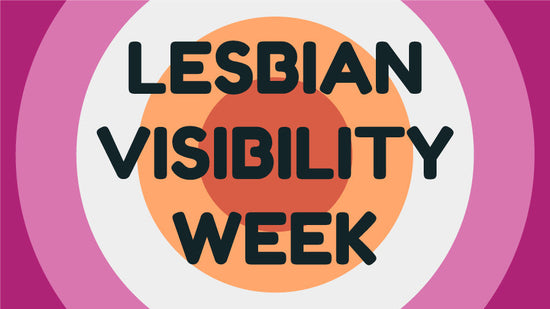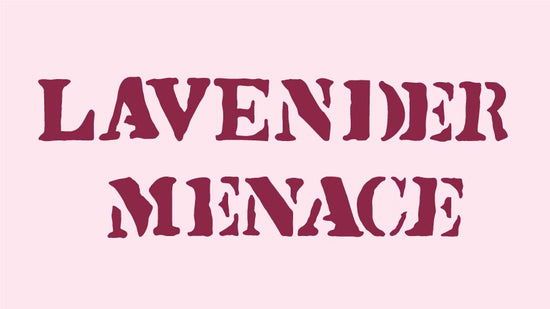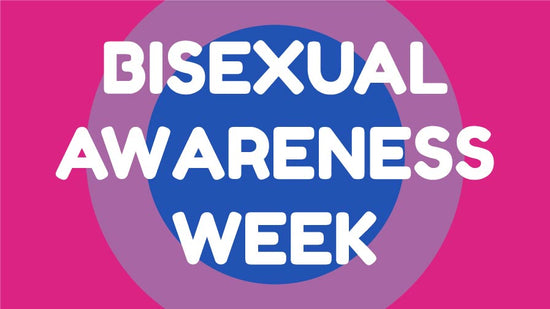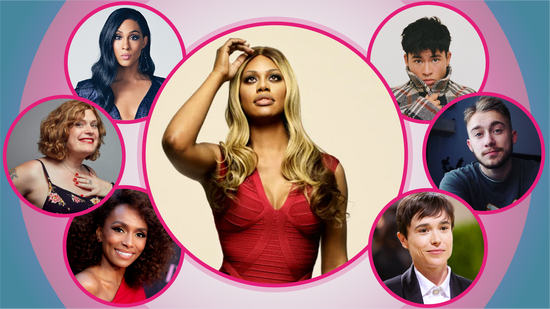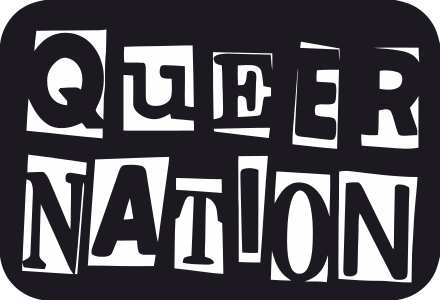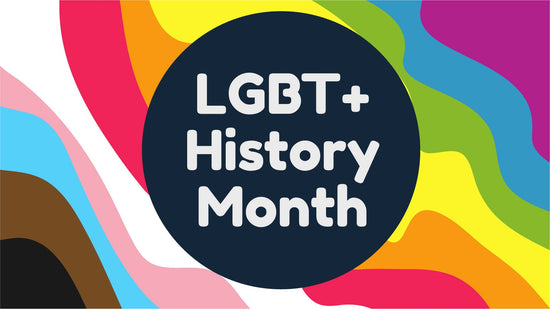Lesbian Visibility Week: Queer Iconic Women You Should Know

Heroic Lesbian And Queer Women
When it comes to heroes we all have our favourites. Yours may be sporting heroes such as Jill Scott, Sam Kerr, Megan Rapinoe or Brittney Griner. Or amazing actresses such as Sarah Paulson and Jodie Foster. In music there’s the brilliant Hayley Kiyoko and Tegan & Sara.
One of the goals of Lesbian Visibility Week is to celebrate the lives, achievements and contributions of lesbian women and non-binary people around the world.
So I'm going to spotlight three women who've challenged expectations. Who either confronted incredible danger or who refused to accept that they couldn’t achieve their goals in a male dominated world and rose to the very top. Hopefully you’ll be adding them to your list and want to learn more about them.
The Spy
Catherine “Toto” Koopman

Toto was born in Java in 1908. Her father was Dutch and her mother half Javanese, and they wanted Toto to be educated, so they sent her first to a prestigious boarding school in Holland and then to a finishing school in England.
However, the beautiful and ambitious Toto wanted something different and so, aged 19, she left her finishing school and moved to Paris to become a model against her parents wishes.
They considered that modelling was a bad career for their daughter, being, in their opinion, only slightly better than sex work. But Toto was successful. She modelled for Coco Chanel and other Haute Couture designers and was the first biracial woman to be on the cover of Vogue magazine.
Toto was bisexual and was one of the actress Tallulah Bankhead’s many lovers. She once remarked: “One dressed up not to please men but to astound other women.”
After several years of intelligence gathering for the British in Paris Toto moved to Italy and became a part of the anti-Mussolini resistance movement. Thanks to her education, she was fluent in Dutch, English, French, German and Italian and this, as well as her model status, made her and ideal spy.
She infiltrated Mussolini’s fascist blackshirts and gathered information for the resistance. However, she was caught in 1941 by the Italian Police and interred in the Massa Martana Detention Camp. She escaped from the camp, but was subsequently discovered and returned.
She escaped for a second time and this time she fled to Venice and was supported by a rich friend, who hid her in a secret suite at the prestigious Danelli Hotel.
The Germans had become aware that the hotel was hiding people and they planned a raid. But in a stunt worthy of a Hollywood film Toto’s friend threw a magnificent dinner in ‘honour’ of the visiting German General and sat Toto next to him. The General had no idea that she was a spy and a two-time escapee and was charmed by her beauty, the dinner was a success and Toto had hidden in plain sight. Sadly, two weeks later she was discovered, captured and this time sent to the infamous Ravensbruck Concentration Camp.

With no chance of escape, Toto convinced the officials that she was a trained nurse and was given a job in the infirmary, a move that saved her life.
She was released to the Red Cross prior to the camp being liberated and her influential friends sent her to Switzerland to recuperate. It was there that she met Erica Brausen a German, Lesbian resistance fighter and art dealer. Toto and Erica fell in love, moved to England and opened the famous Hanover Gallery, they remained together until Toto died from a stroke in 1991, 18 months before Erica. The two women lived openly and defiantly as a couple, they were non monogamous and continued to have other lovers. This was not uncommon, many lesbians of that time had open relationships.
OUR LESBIAN COLLECTION view the full collection
The Astronaut
Sally Ride

In 1977 NASA started a recruitment campaign for new Astronauts and for the first time they wanted applications from women as well as men. An advert on the front page of The Stanford Daily newspaper drew a staggering 8,079 applicants. They whittled the list down to 35, six of whom were women. And one of those was Californian physicist Sally Ride.
On the 31st January 1979 Sally completed her one year of training and was officially an astronaut. Initially she was confined to the ground-based work but then in 1983 Sally was selected to be a mission specialist on the Space Shuttle.
Being the first woman in space raised lots of questions. Sally was asked if she would need a “Space makeup kit” and NASA famously wondered if 100 tampons would be sufficient for her six-day mission. The press was interested in whether going to space would affect her ability to have children and if she cried when things went wrong (oh the misogyny).
On the 18th June 1983 Sally became the first American woman, and only the third woman, in Space, when she took off in the Space Shuttle Challenger on it's STS-7 mission. At 32 she was also the youngest American astronaut at the time.
After the mission Sally became an instant celebrity and spent the next few months touring America and giving interviews. In 1984 she joined the Challenger crew again as an expert with the onboard robot arm, which she had helped to develop, and she took off from the Kennedy Space Center on 5th October. She was scheduled to do a third mission, but it was cancelled after the Challenger disaster.

Having worked on the investigation into the disaster, Sally left NASA and in 1989 became a professor of physics at the University of California, San Diego, and director of the University's Space Institute.
In 2011 she was diagnosed with pancreatic cancer and despite treatment she died in July 2012. After she died a part of her life that she had kept private became public. Sally had been in a lesbian relationship for 27 years. Although Sally had dated both men and women the love of Sally’s life was Tam O’Shaughnessy. They had worked together extensively, written books together, especially books to encourage girls into science, and show that there were no limits to what women and girls could achieve.
The World Leader
Jóhanna Sigurðardóttir

When Jóhanna started work as a flight attendant when she was 20, I wonder if she imagined that one day she would be the Prime Minister of Iceland and the first openly LGBTQ+ leader in the modern world?
Jóhanna was never ‘just’ a flight attendant, almost as soon as she started working, she became involved with the trades union movement, looking to improve pay and conditions for people working in the aviation industry.
From there she wanted to bring about change and improve lives for more people and started a career in politics. In 1978 she was first elected to the Icelandic parliament as part of the Social Democratic Party. After rising rapidly and taking several ministerial posts, she left the Social Democratic Party in 1994 to form a new party, National Awakening , which then merged with her old party in 2000 to become the Social Democratic Alliance.
In 2009 she was chosen to lead a coalition with the left Green Movement because she was such a popular figure and she became Iceland’s first female Prime Minister, the world’s first openly LGBTQ+ Prime Minister. Later that year both parties made gains in the elections, the coalition strengthened its hold on government and she was listed as one of Forbes most powerful women in the world.
When she announced her retirement in in 2012 Jóhanna was Iceland’s longest serving member of Parliament. During her time in government she had been a leading advocate into advancement of LGBTQ+ equality, and was one of the first lesbians to legally marry in Iceland.
“It is absolutely imperative that every human being’s freedom and human rights are respected, all over the world.” She said. “Freedom and Human rights - that is what the world needs most, that is what everyone longs for, and should be entitled to, in order to be able to live with dignity.”
Find More Iconic Queer Women
Lil Gault, the author of this article writes amazing posts about iconic queer women every single day on Threads. To read her posts go to https://www.threads.net/saphy76
Lesbian Visibility Week
In 2024 Lesbian Visibility Week is about celebrating the power of sisterhood by uplifting incredible LGBTQIA women and non-binary people from every generation, in every field and in every country around the world. One community, so many brilliant individuals.


